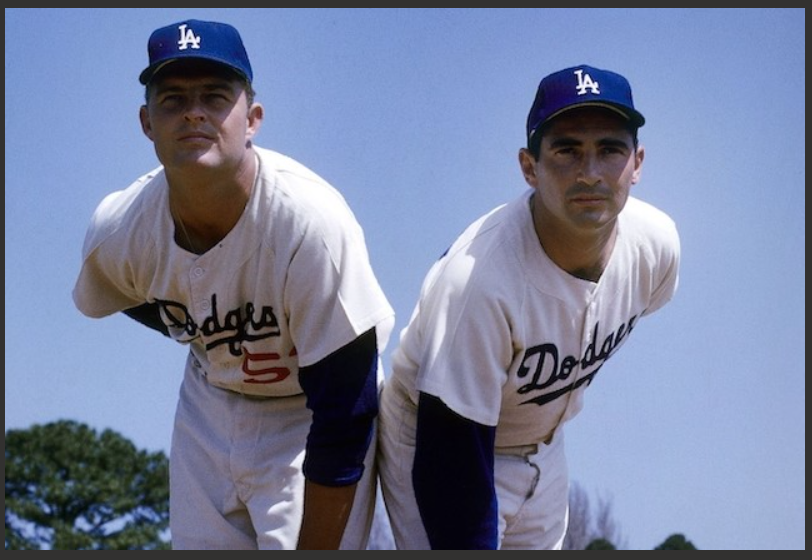
As 1966 began, teams were getting ready for spring training and GM’s and players were finalizing contracts. 1966, no long term deals, most contracts were based on the prior year’s performance.
The Dodgers, fresh off of their World Series win over the Twins in seven games, were no different. Their two ace pitchers, Sandy Koufax and Don Drysdale. Koufax, the 65 Cy Young winner, and the series MVP had posted a 26-8 season with a 2.04 ERA. He also struck out a major league record 382 batters.
Drysdale had rebounded from a 18-16 season in 64, to win 23 in 65. It was his second season with 20 or more wins. He pitched 308 innings and added 210 K’s to Koufax’s total. Of the four wins in the series, he got one, and Sandy won two with the other going to Claude Osteen.
To understand the holdout, one must also understand the way GM Buzzie Bavasi negotiated contracts. Players did not use agents back then, they met with the GM face to face. Bavasi was known for getting players to sign for less than they asked for.
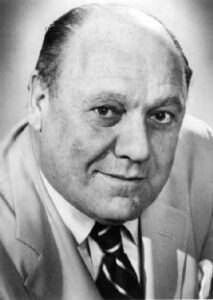
One of his negotiating ploys was putting a FAKE contract for a star player on his desk in plain view while negotiating with another player. This contract would have a figure lower than what the player was asking for. Bavasi would excuse himself from the room for several minutes, giving the player time to see what the star was SUPPOSEDLY making.
Usually, the player would sign for a lower figure than what he was asking. That was the way Buzzie worked. And in those days, 5000 dollars was a lot of money.
Also needing to be understood is the different relationship Bavasi had with Koufax and Big D. Drysdale and Bavasi had an unusually close relationship. And before Koufax came into his own, Big D was the undisputed Ace of the team. Being California born, he was more or less promoted as the face of the team.
Koufax was also treated differently by Walter Alston. The reason for that was because he was signed as a bonus baby with no experience, and had to be kept on the roster for two years. This delayed his development since he never spent a day in the minors.
And the Dodgers themselves were not innocent in all of this. When Koufax became the star, they still would attempt to create a rift between them. Despite that, Big D and Sandy became close friends. Close enough that they often stayed in each other’s homes, Big D with Sandy in Brooklyn, and the other way when they went to LA.

Another part of the story is the negotiations between Koufax and the team before the 1964 season. Koufax, coming off of a Cy Young and MVP season, and winning two games in the World Series and winning the series MVP, wanted a raise to 75,000 from the 35 he made in 63.
The Dodgers at the time had a strict policy of negotiating directly with the players. It was the time of the reserve clause where players were tied to the team for as long as the team wanted them.
Koufax felt he deserved a raise of at least double what he had made. He asked for $5,000 more than that. After all, he was a team player and he was a good person to boot.
As the negotiations proceeded, Koufax wanted an attendance clause in his deal. That would give him a percentage of the gate, after all, he was the team’s biggest draw, sort of like Fernando was in 81. You could expect close to 10,000 more fans when Sandy pitched.
Bavasi argued that Sandy had not led the league in innings pitched, so he did not merit that size of a raise. This infuriated Koufax, who had led the league in most pitching stats despite his arm hurting so much.
After holding out for several days and days of intense negotiations, Koufax settled for $70,000 just before the team left for spring training.
Soon after he signed, the Los Angeles Herald Examiner published a story by Bob Hunter saying that Koufax had threatened to quit unless he got $90,000 dollars.
Sandy was really pissed that the story had painted him as greedy, he responded with an article in the Times by Frank Finch, saying that he never asked for $90,000. He also said,” I have been hurt by people I thought were my friends.” What was more disturbing were the antisemitic tropes directed at Koufax, one of the few Jewish players in the majors at the time.
Needless to say, the relationship between Sandy and the team was soured. Sandy believed someone from the front office had leaked the story. In the first week of spring training, still angered and embarrassed by the way he had been treated, he approached Shirley Povich of the Washington Post, Milton Gross of the New York Post, and Joe Reichler of the Associated post to tell them his side of the story.
Due to Sandy’s normal quiet demeanor, this caused a media frenzy. Eventually Walter O’Malley and Bavasi talked Koufax down to letting the issue go. Even though he did, his relationship with the front office was never the same.
Jump ahead to January 1966. As per normal. Sandy entered into negotiations on his contract for the coming season. Again he was coming off of a World Series win, and another Cy Young. year.
After meeting with Bavasi who turned down his salary request by saying Drysdale, who won 23 that year, was asking for less. Sandy went to dinner with Don and his wife Ginger. Still irritated that Bavasi had used his own teammate against him, Drysdale responded that Bavasi had done the same thing with him.
The two compared notes on their negotiations and realized that the Dodgers GM was playing one pitcher against the other. Ginger, who once had been an actress and a model and a member of the Screen Actors Guild, suggested that the pair negotiate together so they could get what they wanted.
So in January, they informed the Dodgers that they were holding out together. In another unusual move for the time, they were represented by entertainment lawyer J William Hayes, Koufax’s business manager.
Also unusual was their asking for $1 million dollars, to be divided between the two of them over the next three years. About 167,000 apiece. They told Bavasi they would negotiate their contracts and one unit through their agent. The Dodgers refused to talk to Hayes, saying it was against their policy.
As the holdout continued, the pair held firm and did not report when spring training started in February. Instead they signed to appear in the movie, “Warning Shot” starring David Janssen in case the hold out went into the season.
Koufax also signed a book deal to publish his autobiography, “Koufax” with writer Ed Linn which according to Linn, the usually private Koufax only agreed to do as a safety net.
The Dodgers started a public relations campaign against the players. The result of which was public opinion was on the side of the owners and the baseball establishment.
Koufax was discouraged by the treatment he and Drysdale got from a large segment of the fan base during the holdout.
He was astonished that so many American citizens really believed they did not have the moral right to quit instead of working for a salary they felt, rightly or wrongly. to be less than they deserved. Just take what they want to give you, suit up and do 25 laps.
Not wanting to add fuel to the fire, the two, unlike the front office, steered clear of the press. They kept a low profile and made no statements to the press during the holdout.
According to Drysdale, teammates, like Johnny Podres, called occasionally and tell them to put aside their differences and come to spring training. They suspected that they were put up to that by Bavasi.
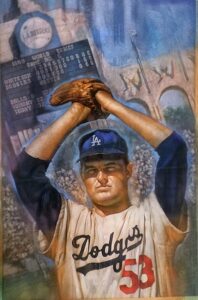
At one point O’Malley threatened to trade them when it was suggested they might talk to other teams. When the holdout began, O’Malley explained his reluctance to deal with a third party. ” I admire the boys’ strategy, and we can’t do without them even for a little while, we are lacking too much. But we cannot give into them. there are too many agents hanging around Hollywood looking for clients.”
In the meantime, Hayes found a state law which made it illegal to extend personal service contracts in California beyond 7 years. It stemmed from a case, De Havilland vs Warner Bros Pictures.
Hayes began to prepare a lawsuit against the Dodgers and challenge the reserve clause. He later said that if the two had challenged the clause and been successful, they would have been the ” Abraham Lincoln’s of baseball.
O’Malley got wind of Hayes’ findings, he was tipped off by Mervyn LeRoy, and the team’s stance against the players softened.
Actor and former baseball player, Chuck Connors, set up a meeting between Bavasi and the players. Koufax gave Big D the go-ahead to negotiate for both of them, “If you’re happy, I’m happy. At the end of a 32 day holdout, Koufax signed for 125,000 and Drysdale, 110,000. Koufax was the highest paid player in baseball in 1966.
The team had them sign at a press conference at Dodger Stadium stating they had been signed separately and not represented by an agent. Jokingly Koufax said, “I am glad I did not have to act in that movie!”
Drysdale was relieved as he had a wife and children and could not afford to hold out for a long time. The holdout affected Drysdale adversely as he went 13-16 with a 3.42 ERA, by far his worst at Dodger Stadium, Koufax on the other hand won his third unanimous Cy Young Award and led the league in most pitching categories
They won the pennant, but were swept by the Orioles in the World Series. Drysdale lost two games and Koufax one when his defense and offense totally deserted him.
The animosity created by Bavasi and his negotiating tactics would eventually backfire on the team. By November, Koufax, on the advice of Robert Kerlan, the Dodgers team doctor, had decided to retire. Kerlan had actually advised Sandy to retire after the 65 season, warning him that continuing to pitch with his arthritic left arm, might eventually cost him the use of the arm.
Bavasi asked Koufax to delay the announcement until Walter O’Malley returned from Japan. This was also the Japan trip that Wills left, infuriating O’Malley enough to order Bavasi to trade him. They also wanted the time to trade for another pitcher.
Sandy refused and announced his retirement due to the issues with his arm as the main reason. Notably, no Dodger front office personnel were present at the press conference.
In May of 1967, Bavasi, in a Sports Illustrated article, brushed the holdout as nothing more than a publicity stunt. He then downplayed the pain in which Koufax had pitched his last several seasons. ” Sandy never suffered agonizing pain when he pitched and he never said he did either.” He then criticized the way he retired.
The legacy of the holdout is that it was the first time players had stood up for themselves against the reserve clause. Marvin Miller used the holdout as an argument for collective bargaining. He was soon elected as the first executive director of the MLBPA.
In 1968, when the MLBPA was negotiating their first collective bargaining agreement, the owners, citing the Koufax-Drysdale holdout, wanted protection against players teaming up to hold out. The union agreed with the condition that the owners would not do the same.
The language which was signed off on was later used to cite the owners themselves for collusion when they depressed salaries in the 1980’s.
Miller later said that the holdout was the first key event which would eventually lead to free agency. Koufax said that it started as a very small union, just him and Big D.
On a personal note, it is my firm belief that Bavasi did not negotiate in good faith. O’Malley was notoriously tight fisted, but he built one of the best organizations in baseball.
But Bavasi playing players against each other, well, that is pretty low. And the personal attacks and PR campaign against two of the best who ever toed the rubber for the Dodgers, that was just bad form.
I believe it is one of the reasons that Sandy stayed away from the team for many years. He came back when they retired his jersey, but I think by that time, Bavasi had moved on to the Padres. I do not think Sandy would have liked him being there.

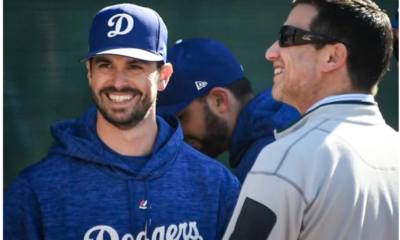





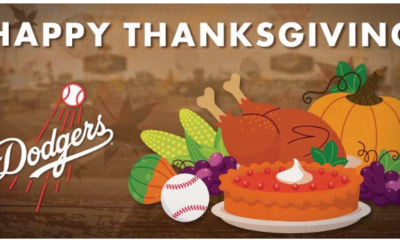





I was 10 years old, and a pretty good Little Leaguer. My dad, of course, thought I was better than pretty good. So he started thinking I could be a big leaguer and get paid like Sandy and Big D.
Dad noticed that I was a better ballplayer than my big brother.
One time there was an argument about chores. My big brother was expected to mow the lawn and take out the trash. We shared a room. His side was neat, my side was messy.
My sister wanted to know why I didn’t do more chores.
And dad declared that my chores were to play baseball.
Boy, was I spoiled.
My dream was to play first base for the Dodgers. But that fizzled fast because by the time I got to playing high school ball, I realized I was not that good. But I still got my moment at Dodger Stadium the night I sang the Anthem in 81, for a World Champion team.
Great story, Bear! Big D is my favorite Dodger but never saw him play. I rely on stories like yours for confirmation of his greatness on the mound and as a fierce competitor. I only knew Big D as an announcer for the Angels and he was a joy to listen to along with Dick Enberg.
I’m old enough to remember when the only televised Dodger games were the nine times they played the Giants at Candlestick. Seemed like Drysdale usually got rocked by McCovey — who would hit the ball out to the “Willie McCovey Marching and Chowder Society” beyond the right field fence. This was the name Vin gave to the fans who gathered in right to hopefully catch a McCovey ball. Next Giants batter would be dodging some serious chin music.
When they first came to LA, that number was 11. They played 22 games a year against each other until the expansion. Vin would call the fans of not just McCovey, but almost every player the Marching and Chowder Society.
He was working for the Dodgers with Ross Porter when he died in Montreal. It was once said that he would knock his mother down if she dug in on him. He threw sidearm. And because of his size, it looked like the pitch was coming right at right-handed hitters. I went to a Dodger-Cardinal game at the coliseum in I think it was 59. Big D was pitching. He hit Cardinal first baseman, Joe Cunningham right in the ribs. As Cunningham went to first, the Cards manager, Solly Hemus went out to check on him. When he headed back to the Cardinal bench, which in those days was on the third base side of the diamond, instead of walking behind home plate, he crossed the field right in front of Drysdale and as he did, he said something to him. Next thing we all knew, Drysdale had him in a headlock and the bench’s cleared. Hemus was 5’9″ and Drysdale was 6’5″.
Cease trade does not really bother me. Padres still not deep enough to challenge the Dodgers. And it looks like they really did not give up a whole lot. None of those guys were in their top 30 prospects and the fourth player was a 29-year-old big league reliever with one year at the MLB level, Steven Wilson.
Bear, the three prospects were all in the top 8:
RHP Drew Thorpe (#5) (23), RHP Jairo Iriarte (#8) (22), OF Samuel Zavala (#7) (19).
All all three are top 9 with CWS. Thorpe (#3), Zavalas (#6), Iriarte (#9).
The Dodgers would have had a tough time matching that. CWS did very well.
Here are a couple of Twitter Videos for Zavala.
When I checked the Padres Top 30 list, none of those guys were there. Probably because they had been traded. My bad
I think the Padres did well. They certainly need help.
At the start of the offseason, I thought the Dodgers had a good shot at Burnes, perhaps in a package with Adames that would involved Lux and others. But Burnes was main target I considered him as the best SP on the market–either via trade or free agency–and still do. While we armchair GMs cooked up a lot of deals, there seemed to be no traction. The Orioles did well to snag him.
Then there were rumors that the Dodgers might get Cease. Seemed like an okay consolation prize, even if Cease was coming off a bad year. A strong bounce-back candidate.
I was wary of Glasnow because of his injury history. But I thought the deal was fair, and the reports about Glasnow’s successful surgery were promising. And he’s been lights-out in spring. Very glad he’s a Dodger now.
And of course I’m expecting good things from Yamamoto, since so many Japanese pitchers have made a successful transition–and he’s considered the best.
Glasnow, Yamamoto, Miller, Paxton, Stone
So I don’t worry much about the pitching.
The big question, of course, centers in the middle infield, especially SS.
Even if the infield defense is below average, the Dodgers should power their way to another division title.
But will the defense be good enough for October?
I understand Burnes, but I just do not get everyone’s desire to trade for Adames. The guy has power and is a decent SS, but he is not the defender Rojas is. He is making 12.5 million this season, and he is a rental. Sorry, we have gone that route before, and he left after 1 1/2 years. Machado was a rental too, and he was nowhere near the player he was when they made the trade. Adames is a strikeout machine, and this team has too much of that already. His career OPS is below .800. His OPS+ last season was 95. It is only 107 for his career. Rojas career BA is 10 points higher than his. My biggest memory of Adames is him striking out to end the 2020 World Series. Also, if you have to trade Lux as part of the deal, the team becomes RH heavy. The kicker here, and one reason I do not want the guy at all, he hits RHP better than he does lefties.
First of all, I AM NOT IN FAVOR OF TRADING FOR WILLY ADAMES, however it depends as to what metric you follow for defense to determine who is measured better defensively.
Adames was an 8 DRS last year while Rojas was a 12.
Adames was 16 OAA and 99th percentile, while Rojas was 6 OAA and 91st percentile.
Adames was 5.9 UZR (which includes 2.8 RngR) while Rojas was a 0.6 UZR (which includes 0.0 RngR). RngR measures range runs above average.
Adames was in 73rd percentile for arm strength, while Rojas was 44th percentile.
Let’s just say both are elite defensive SS. With Adames measured better than Rojas when considering the metrics in their totality.
Rojas – 2023 – 69 wRC+ and 0.6 fWAR.
Adames – 2023 – 94 wRC+ and 3.4 fWAR
Rojas 2024 projectsions – 83 wRC+ and 0.7 fWAR
Adames 2024 projections – 108 wRC+ and 3.7 fWAR
Adames is 7 years younger than Rojas.
Adames strikes out more, but only slightly more than league average (25.9% to 22.8%). He also walks more than Rojas and better than league average (11.1% to 8.5%).
Adames’ OPS was .105 higher than Rojas.
Adames is arguably a better defensive SS, hits with more power, drives in more runs, gets on base more, and yes strikes out more. The problem is, outside of pitching, IMO, there is not any prospect that Milwaukee would want over what they already have (except maybe Josue De Paula). And they have no use for Gavin Lux. Thus, there is no way the Dodgers are getting Willy Adames before he becomes a FA (if they want him then).
Mookie is not the long term answer at SS. He should not be the SS this year. The Dodgers are invested in Lux being a regular 2B (if not SS), so they will live with his defense at 2B unless it gets out of control. So, the Dodgers are going to have to find a SS beginning next season at the latest. The only one close is Trey Seeney. Is he good enough to be the everyday SS for a championship team? I have my doubts, and I am guessing the Dodgers do as well.
Never said you were Jeff, but so many guys on this site and another keep bringing the guy’s name up. I will admit one thing though, I just do not like the guy or 150 plus K’s a year. Too much of that on this team as it is. And I totally dislike renting players.
I am sorry. I did not mean for that to come out as if you were talking about me. I just wanted to emphasize that I am not in favor of an Adames trade even though I do beleive Adames is a better option than what the Dodgers currently have. The cost would be too muchh.
Not a problem. Like I said, I just don’t like him or his game. Also, I dislike the idea of bringing in a new guy before the season even starts. Wait until they see what they have, then address the problem at the deadline. I also dislike the idea of disrupting team chemistry, which with this bunch is very good. Got my new headlight assembly put on my truck. Looks nice. I got black ones to match my grill. Town has gotten about a foot of snow today. All power downtown went off. I saw something today, I never thought I would see. Wal-Mart was closed due to no power, and a ton of snow.
I remember some of that holdout history. In July of ‘66 I went to boot camp and for the next three years my mind and body were elsewhere. Back then 300 IP was about as common as 200 IP is now. And asking for $100,000 was not out of bounds. Can you tell me what happened to ticket prices after those contracts were signed?
Is any starting pitcher ready to go 7 innings now? I don’t think so. 6 innings will be the target and frankly I’d be surprised if anyone did that.
On ESPN ATH and PTI were discussing the Dodgers middle infield moves. Though all admire Mookie Betts and believe he can probably do this, nobody is in favor of it.
Looking at pitching and defense I think it’s not unreasonable to ask the offense to be prepared to score 6-7 every game At least for a while.
Actually, they stayed the same. General admission was 1.50. Pavillion seats were 2.00. O’Malley did not raise the prices for several years. He wanted family’s to be able to afford games. I remember taking my family of four to a Dodger game in 73 and paying 8 dollars for four of us in the pavilion. Parking was 2.50 and Dodger dogs were 1.25. Kids liked those frozen malts, and they were a buck. Pack of peanuts, 50 cents.
Glory days…
Oof… Never mind…
https://www.mlb.com/news/devin-williams-out-with-back-injury
My mom had the same haridresser as Ginger Drysdale back in the day.
Hi— longtime Dodger fan here. This is my first post. I always find this blog entertaining and informative. Great story — I was 11 at the time and was panicked that two of my favorite players wouldn’t be on the team that year. I vaguely remember Bavasi being interviewed on TV disparaging the audacity of Drysdale and Koufax demanding more money. One thing that wasn’t mentioned in the article was that Wills joined the holdout as well. I think he caved in rather quickly however after receiving a slightly higher raise than originally asked for.
It wasn’t mentioned because it wasn’t part of the story that is posted. Wills got traded after the 66 season because he pissed off the owner by leaving the team during the Japanese good will tour. Then he was spotted playing his banjo in Las Vegas and Hawaii.
With the trade of Dylan Cease, and the move of Michael Kopech to the bullpen, one of my favorite former LAD prospects, Nick Nastini, is expected to be #5 in the CWS rotation this year. Even after the STB promises, Lance Lynn did not help the Dodgers over the finish line. 😜 However, the Dodgers still have Joe Kelly from that trade, and the Dodgers have multiple prospects rated higher than Nastrini. Don’t judge a trade in retrospect. It was a good trade at the time, and I wish Nick Nastrini all the luck in the world. Not so much Lance Lynn.
I am in agreement with Ohio Dodger on Lance Lynn
I found the Bruns, Nastrini draft one of the most exciting and interesting recent ones
Not so much Lance Lynn.
LOL. I’m with you.
Braves sign Adam Duvall for 1 year/$3M. I have wondered why the Dodgers did not sign him.
With Duvall signing, the “name” FA that are still available:
I think Atlanta got a bargain on Duvall.
A. Who would they move off of the roster? B. Where would they play him? He is 35. Their out fielders are all younger.
My wondering was before they signws Teoscar and Heyward.
Teoscar had a better year than Duvall did. They wanted Heyward because they wanted another lefty bat. Duvall hit’s RH, and they would be unbalanced.
Mystery solved:
Very Don Drysdale/ Ann Meyers.
Don could have been a DH/pitcher.
Newcombe could have too.
Maybe Greinke too.
I got to see Buehler throwing to live hitters yesterday before the game. He looked real good, I’m pretty sure if they weren’t trying to limit his innings he could start a game when the season starts.
I felt that way too. But it is almost like making a big trade at the deadline. They are saying now he will be ready by May. With Kersh due to be ready to pitch after the All-Star game. Cole to try non-surgical treatments for his elbow.
they are wasting time on non-surgical approach. They’ll eventually say that he needs surgery. BAnk on it.
The only player I saw sign an autograph, while I was at CBR, was Glasnow. It was hard to get very close to the players
Rick Hunneycutt was there watching Buehler, after Buehler was done throwing, a father started up a conversation with Rick, then told him his son wanted to pitch, and did Rick have any advice. He talked to the boy a little bit, signed a ball then took a picture with the boy and his father.
what a classy man, I knew he was a good guy from reading, and hearing stories about him, but to see it in person was something else. All sports need more Rick Hunneycutts.
I went there once when I lived in Phoenix. Hard to get to the players when they were on the backfields. There is a lot of security. I got autographs pre- and post-game down by the dugouts after the game. Rick Monday’s, I got when I was walking on the concourse after the game and met him there. Getting close to the stars of the team was almost impossible. I loved Honeycutt when he was the pitching coach.
True
I can absolutely honestly say I had no desire to learn who his wife was.
Minor interest before but now that we know she was a pro athlete surely someone beside me is marveling at the “gene pool jackpot winner” their child/children may be. I hope I live long enough to see how that turns out!
Same